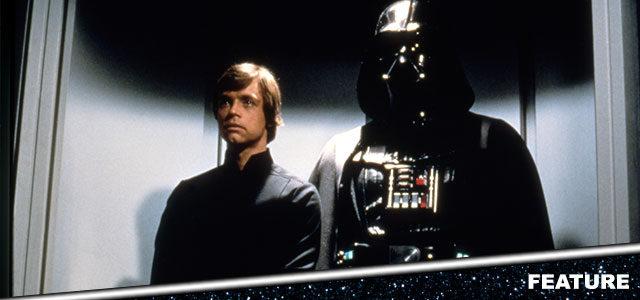
In anticipation of Star Wars: The Rise of Skywalker's release this December, we're counting down all the Star Wars movies in chronological order of release.
This week, we're looking at the final instalment of the original trilogy: Return of the Jedi.
What's the story of Star Wars: Episode VI - Return of the Jedi?
A long time ago, in a galaxy far, far away, the rebel alliance continues to war with the forces of the evil Empire. The ruthless Darth Vader (David Prowse, voiced by James Earl Jones) has overseen the construction of a brand new Death Star, under the supervision of his powerful master: evil Sith lord Emperor Palpatine (Ian McDiarmid).
Palpatine senses the connection between Vader and his son, Jedi warrior Luke Skywalker (Mark Hamill), and plans to turn the latter to the Dark Side for his own nefarious purposes. The final conflict is brewing, but first Luke must rescue the captured Han Solo (Harrison Ford) from the clutches of Jabba the Hutt.
With the help of Leia (Carrie Fisher), another character with whom he shares a deep-seated connection, Luke leads the rebels in one final destructive assault upon the Empire. At the same time, he comes to terms with the troubled family legacy that has plunged the galaxy into chaos.
How did Return of the Jedi get made?
By the time Return of the Jedi rolled around in 1983, the Star Wars franchise had come to dominate pop culture. No-one on the planet could escape the clutches of this blockbuster phenomenon, one that had unleashed words like 'Jedi' into the popular consciousness while making stars out of the likes of Harrison Ford.
Released in 1977, A New Hope was an enthusiastic and spirited throwback to the kind of the movies that were once prevalent in Hollywood's Golden Age. In 1980, sequel The Empire Strikes Back deepened and darkened the mythology to deliver what is arguably the finest instalment in the series. The twist regarding Luke and Vader's family connection went down in history and also helped inform the rest of the franchise to come.
Expectations weighed heavily on Return of the Jedi, the conclusion to the original trilogy of Star Wars movies. Series creator George Lucas had stepped away from the camera on Empire, deferring duties to Irvin Kershner who encouraged improvisation among the actors and brought a more mature emotional tone to proceedings.
It's perhaps inevitable that Jedi wouldn't live up to those expectations. Although Lucas was again more of a background presence, ceding directorial duties to Richard Marquand, many believe Jedi is afflicted with the simplistic storytelling qualities that would later become more apparent in the Lucas-helmed prequel movies.
Or maybe this third movie is deliberately harking back to the more accessible black/white, good/evil mythology of A New Hope, as opposed to the shades of grey present in Empire? Debate continues to rage around Jedi, although the movie also has its supporters, and there's much to admire in the movie.
Lucas had mapped out the dramatic arc of Darth Vader during the time when Empire's script was being put together. It was at this point that he envisaged the current trilogy of films as four, five and six, imagining a prequel trilogy that would dramatise Anakin Skywalker's conversion to the Dark Side, and his emergence as Vader.
These themes are very much apparent in Return of the Jedi, and punctuate what is an often cartoonish adventure with an unexpected sense of pathos. Truly, this is the story of Vader's redemption, and how it impacts on his son Luke, by this stage a fully-fledged Jedi warrior, but vulnerable to the seductive qualities of the Dark Side.
The pre-production of Jedi was challenging, especially given that Harrison Ford wasn't contracted to do two sequels. On the verge of leaving the franchise altogether, he was persuaded to remain by producer Howard Kazanjian.
"I played a very important part in bringing Harrison back for Return of the Jedi," Kazanjian recalled. "Harrison, unlike Carrie Fisher and Mark Hamill signed only a two picture contract. That is why he was frozen in carbonite in The Empire Strikes Back. When I suggested to George we should bring him back, I distinctly remember him saying that Harrison would never return.
"I said what if I convinced him to return. George simply replied that we would then write him in to Jedi. I had just recently negotiated his deal for Raiders of the Lost Ark with Phil Gersh of the Gersh Agency. I called Phil who said he would speak with Harrison.
"When I called back again, Phil was on vacation. David, his son, took the call and we negotiated Harrison's deal. When Phil returned to the office several weeks later he called me back and said I had taken advantage of his son in the negotiations. I had not. But agents are agents."
Nevertheless, challenges arose when Ford suggested that Solo die in the movie. Screenwriter Lawrence Kasdan agreed but Lucas strongly vetoed the idea. It was a sign of how strictly he controlled the creative decisions even when not directing, and this carried over into many other aspects of the production.
Producer Gary Kurtz, who had worked on the previous two films in the series, told Film Threat that a much more bittersweet ending was envisaged where Luke, battle-scarred and broken, walked off into the sunset.
It's alleged by some that Lucas adjusted the ending of Jedi to make it more optimistic and encourage greater merchandising sales. Was this the moment that Star Wars jumped the shark and became more about the franchise behemoth than the storytelling itself?
Opinions continue to rage. Certainly, the presence of the climactic battle with the cuddly Ewoks (whose roles were originally to have been occupied by Wookies) strike a far more whimsical and, for some, foolish note compared to the darker tones of Empire.
It appeared to foreshadow the self-indulgence of the prequel trilogy, one overseen and controlled by Lucas in his entirety to the potential detriment of fans. Kurtz said before his death in 2010: "I think one of the problems that Lucas has now, in the LucasFilm empire, is the fact that he doesn’t have more people around him who really challenge him."
The title was originally envisaged as 'Revenge of the Jedi' before Lucas later moderated it out of fear that it sounded too brutal and not in-keeping with the Jedi ethos. This would later cause problems when noted artist Drew Struzan's poster designs went out with the original title, forcing a mass recall.
Many directors were approached to helm the movie, including Lucas's preferred choice David Lynch, and even body horror master David Cronenberg. The responsibility eventually fell to Richard Marquand, who would later go on to helm Glenn Close-Jeff Bridges suspense thriller Jagged Edge in 1985.
Marquand noted Lucas's presence on set (he also stepped in to direct some second unit sequences), wryly commenting, "It is rather like trying to direct King Lear – with Shakespeare in the next room!"
Further script changes included the addition of the Dagobah scene where the 'Force Ghost' of Obi-Wan Kenobi (Alec Guinness) tells Luke that Leia is his sister. Lucas reportedly did this so that Vader's confession in Empire couldn't be dismissed as a lie by younger viewers who didn't believe it.
However, the revelation does make the kiss scene between the two characters in Empire somewhat awkward – such are the perils of an ongoing franchise that spontaneously gains in complexity as it goes on.
New cast additions included Scottish theatre actor Ian McDiarmid as the scheming Emperor Palpatine (Clive Revill voiced the character in holographic form in Empire). It would turn out to be a career-defining role for the actor, one he would reprise in the later prequels, not to mention this year's The Rise of Skywalker.
Outside of Vader referring to the Emperor as 'master', audiences in 1983 weren't capable of perceiving the latter's influence on the entire Star Wars saga. As revealed in the prequels, Palpatine began life as a Chancellor, manipulating proceedings and planting seeds of doubt in young Anakin Skywalker's (Hayden Christensen) head.
Further complicating the Darth Vader casting was the presence of yet another actor. Although David Prowse embodied the character while wearing the helmet, later to be re-dubbed by James Earl Jones, actor Sebastian Shaw is who we see when Luke removes the helmet from his injured father.
Principal photography ran from January to May 1982, with interiors again shot at Star Wars' spiritual home of Elstree Studios, London. Cost overruns on Empire meant Lucas was fare more cautious with Jedi's budget ($32.5 million), although several moments of pioneering practical effects were used.
This included the high-speed photography of the puppet of the Rancor (originally envisaged by Lucas as a stuntman in a suit), and Steadicam operator Garrett Brown's work during the famous speeder bike chase sequence on Endor.
The latter scene deployed the lush backgrounds of California's redwood forests. Brown (who had worked on Stanley Kubrick's The Shining) walked through a disguised path inside the forest shooting at less than one frame per second. By walking at about 5 mph and projecting the footage at 24 frames per second, the motion seen in the finished film appeared as if it were moving at around 120 mph.
As before, the Lucas-founded company Industrial Light and Magic handled the majority of the visual effects. Production, however was stressful, with the six-year-old company forced into working 20-hour days on six-day weeks to complete the 900 effects shots needed in the movie.
Additional locations included Death Valley in California and the Yuma desert in Arizona. Principal photography wrapped on 20th May 1982.
- Star Wars: The Rise of Skywalker – analysing the new footage
- Star Wars: The Rise of Skywalker – how will the final scene of the saga "melt our mind"?
- Everything you need to know about the Emperor's return in Star Wars: The Rise of Skywalker
How did John Williams compose the score for Return of the Jedi?
By the time he came to compose Return of the Jedi, composer John Williams had singlehandedly reignited interest in the symphonic film score.
His Oscar-winning accompaniment to A New Hope was a rich blend of character and location-specific themes, flying in the face of mid-seventies trends that favoured pop music and needle drops. Working in tandem with Lucas, the revered Williams (who had by this stage already won an Oscar for Jaws) crafted an emotionally powerful connection with the viewing audience.
In the eyes of many, his score for The Empire Strikes Back is even better. It didn't win the Oscar (although it was nominated), but Williams's development of his pre-existing Star Wars themes, plus deployment of several new ones, helped advance the mythology of the franchise. The most famous of the new additions was of course the militaristic 'Imperial March', the musical identity of the all-consuming, powerful Vader.
Said march is incorporated liberally throughout the score for Return of the Jedi, keeping us on tenterhooks as we anticipate the power of the resurgent Death Star. But the most significant new theme is that for the Emperor, a spine-tingling piece for male throat singers that speaks of Palpatine's fierce Sith powers. This builds to near-ecstatic levels during the climactic confrontation between the character and Luke.
In-between, we have reprises and developments of much-loved Star Wars pieces, all of which demonstrates the composer's mastery of his musical tapestry. By 1983, the music for Star Wars had seeped into the collective consciousness and Williams takes great relish in harnessing the many themes to variously heroic and heartbreaking effect.
This includes the moving statement of the Force theme during Vader's funeral pyre, a masterful example of how the conventions of a particular piece of music can be twisted to evoke a very different emotional response. In this sequence, Williams fuses the light side and the dark, showing us Vader's redemption and making us shed tears in the process.
Of course, not even Williams could escape the inherent silliness of the narrative. When it comes to the Ewoks, fundamentally child-like and silly creations, the composer had little choice but to compose a jaunty march that underlines their cuddliness.
Oddly enough, there are two versions of the climactic Ewok music from the movie. The original 1983 theatrical release was scored with 'Yub Nub', the vocal statement of the Ewok and rebel victory over the Empire. This was later replaced in the 1997 special edition re-release of the movie with a track named 'Victory Celebration'.
(In cult comedy series Spaced, Simon Pegg recorded the entire lyrics of 'Yub Nub' from memory for a sequence when the characters watch Return of the Jedi on the TV.)
What was the legacy of Return of the Jedi?
Mirroring the release date of A New Hope, Return of the Jedi arrived on on 25th May 1983. In 1997, special editions of all three movies, complete with revised sequences and improved visual effects, were released. Jedi's new additions included the addition of a beak to the Sarlacc (the creature that devours bounty hunter Boba Fett), the aforementioned change to John Williams's score in the climax, and a different song in Jabba's throne room.
Lucas's incessant fiddling didn't end there: he would later substitute Sebastian Shaw for prequel actor Hayden Christensen during the climactic Force Ghost shot.
Although the critical response was somewhat muted compared to the previous two movies, several noted critics expressed enthusiasm.
The late, great Roger Ebert was one of them, gracing the movie with a four-star review and commenting: "From the point of view of simple movie-making logistics, there is an awesome amount of work on the screen in "Jedi" (twice as many visual effects as "Star Wars" in the space battles, Lucas claims). The fact that the makers of "Jedi" are able to emerge intact from their task, having created a very special work of the imagination, is the sort of miracle that perhaps Obi-Wan would know something about."
According to Box Office Mojo, the film was a box office success with takings of $475 million worldwide. This is less than what Empire took, and considerably less than the gross of A New Hope, but still a phenomenal result when considering its $32.5 million budget.
That the movie took less than its predecessors may have been a sign that, at the time, franchise fatigue had set in. Word of mouth around the Ewoks and certain aspects of the storyline were also negative, made all the worse by the fact that predecessor Empire had shown audiences were willing to embrace a darker narrative.
Nevertheless, the movie currently stands at an impressive 81% on Rotten Tomatoes, a sign that Jedi's reputation has weathered relatively well over the decades. For all its flaws, consensus seems to be the movie resolves a complex family saga with enough panache to paper over the bumpy sections.
At the end of the day, any resolution to a Star Wars saga invites bittersweet feelings of nostalgia and an outpouring of emotion, regardless of the incidental flaws in the movie itself. (Just look at 2005's Revenge of the Sith as a prime example of that.) There's no denying that Return of the Jedi scores an ace where it counts the most: in its handling of the Luke Skywalker and Darth Vader storyline.
What was the next movie in the Star Wars saga?
It would be 16 years before Star Wars returned. In 1999, the first instalment of George Lucas's prequel trilogy, The Phantom Menace, arrived on the big screen in a flurry of frenzied anticipation.
When is Star Wars: The Rise of Skywalker released in the UK?
Star Wars: The Rise of Skywalker is released in Cineworld on 19th December. Tweet us your favourite Star Wars moments @Cineworld.
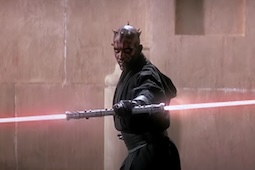
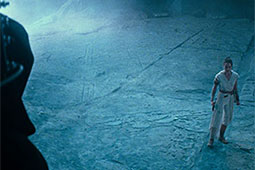
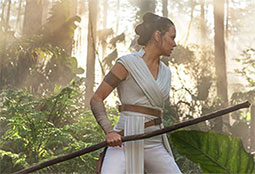
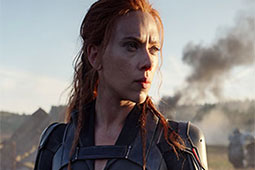
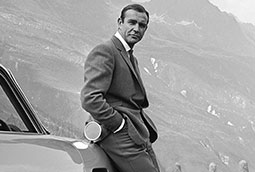
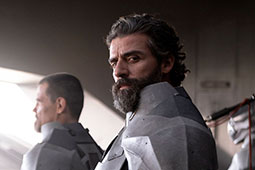
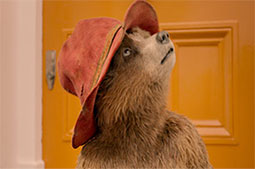

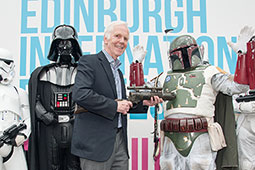
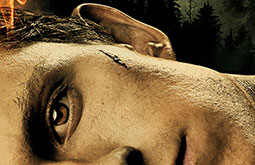
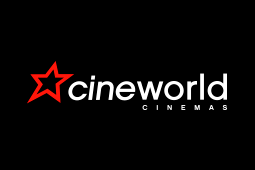
.jpg)

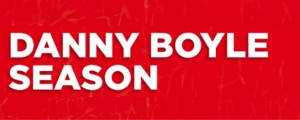
.jpg)
.png)






